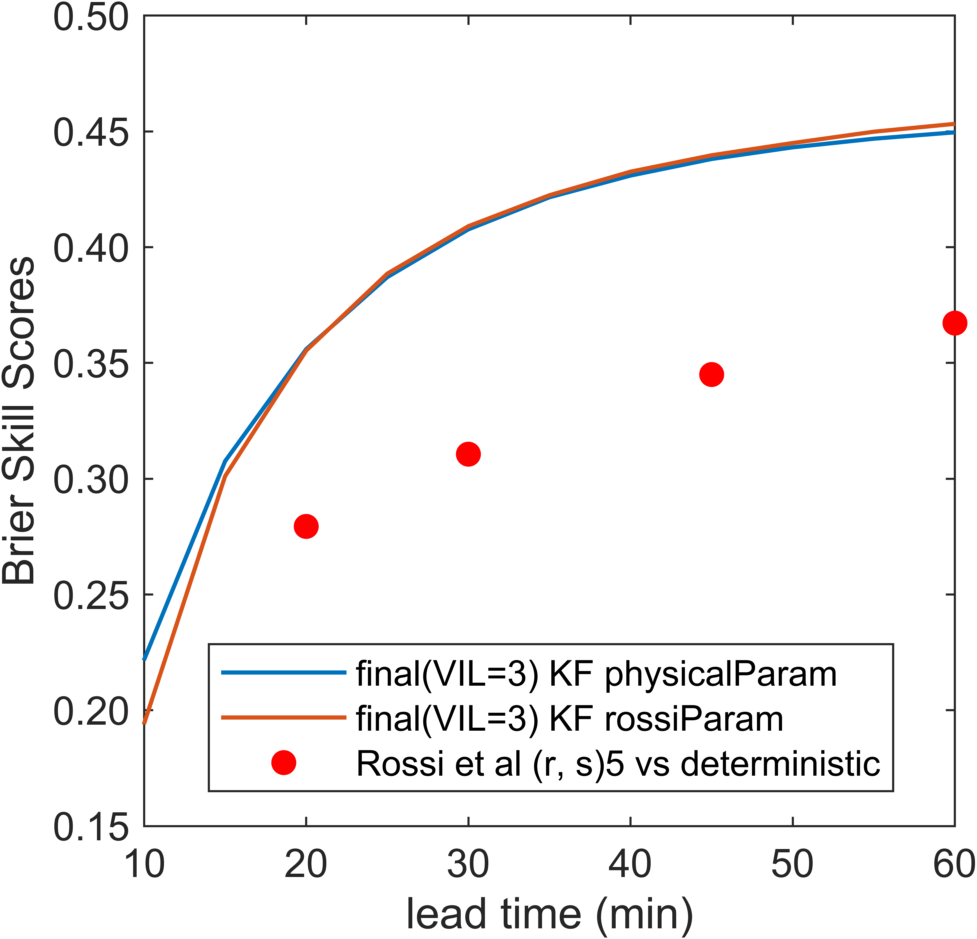Dr. Li-Pen Wang Co-developed the New Operational Object-based Storm Nowcasting System for the UK Met Office
Dr. Li-Pen Wang from the Department of Civil Engineering recently worked with a team of international researchers from Imperial College London (UK), KU Leuven (Belgium) and Rain++ (a UK-based startup) to co-develop a new object-based radar rainfall nowcasting system for the UK Met Office (see Fig. 1). As the Scientific Lead of the project, Dr. Wang was responsible for developing the core nowcasting algorithms. This system has passed the testing period and will be used in real-time operation to support the UK Met office’s forecasters in predicting the movement of convective rain cells.
Radar-based nowcasting is a widely-used technique to predict the variations in rainfall for the next few hours. Object-based nowcasting is largely used for predicting the motion of convective storms due to their clustering nature. It generally constitutes two components: tracking and prediction. The former focuses on tracking the recent movements of the rain cells, whilst the latter, based upon the recent movements, extrapolates the potential positions of the rain cells for the next few hours.
In the newly-developed system, the tracking component was implemented based upon an innovative algorithm proposed in 2018 by Dr Wang and his colleagues in KU Leuven (Muñoz et al. 2018). This algorithm had been pre-selected prior to the project by the UK Met Office’s scientists for its feasibility for real-world operation. It incorporated optical flow techniques into the tracking process, which effectively improved the tracking accuracy. This algorithm was further adapted here to work with UK Met Office’s new 3D radar product. The prediction component was developed based upon the Kalman filter based method proposed by Rossi et al. (2015). Nonetheless, instead of being derived from engineering calibration, the key parameters of the prediction component were obtained via analysing the features of historical rain cells and their evolution with time. Moreover, these parameters are applied in an adaptive manner during the nowcasting, rather than in a constant way. These changes have proven to lead to a better estimate of the prediction uncertainty and thus provide more informative forecast results (see Fig. 2).

Fig 1: Case study 4th July 2021 16:45 UTC – lead times 10, 20 and 30 min. A snapshot of the newly-developed object-based storm nowcasting system.

Fig 2: Brier skill scores (BSS) for two versions of the Kalman filter model with different parametrisation (lines) with comparison against scores from Rossi et al. (2015) (round markers).
Reference
Muñoz, C., Wang, L.-P. & Willems, P.: Enhanced object-based tracking algorithm for convective rain storm and cells, Atmospheric Research, 201, 144-158, 2018.
Rossi, P. J., Chandrasekar, V., Hasu, V. & Moisseev, D.: Kalman Filtering-Based Probabilistic Nowcasting of Object-Oriented Tracked Convective Storms, Journal of Atmospheric and Oceanic Technology, 32 (3), 461-477, 2015.